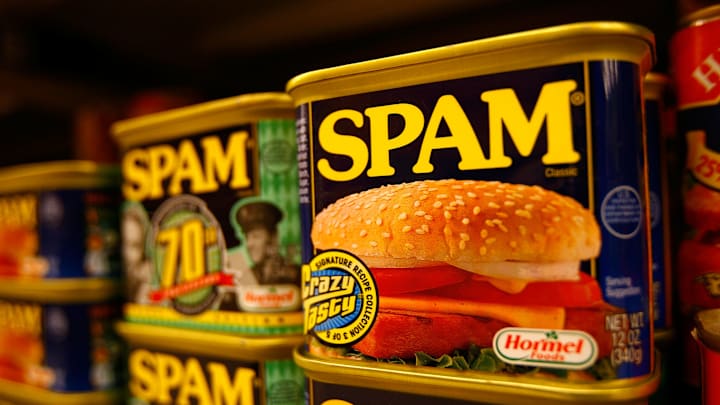While canned food is rarely anyone’s idea of fine dining, a few people reserve a special kind of apprehension over SPAM. The tinned pork and ham product is often dismissed for its peculiar appearance—it’s essentially a processed block of pig—and name that’s become synonymous with unwanted email.
If SPAM confounds you, you’re likely to find agreement in most of the U.S. But not in Hawaii, where SPAM is celebrated and gleefully ingested to the tune of 7 million cans annually. There is no SPAM prejudice there. Even Hormel calls the appetite for SPAM in the state “unmatched by any place in the world.” So what’s the story?
After Hormel introduced SPAM in 1937—the name came from the company’s vice president’s brother and refers to “spiced ham”—it quickly found purpose as a shelf-stable food for soldiers being dispatched around the globe during World War II. (Its grease was also good for lubricating guns and waterproofing boots.) The product soon made its way from military installations to civilian homes in Hawaii, where residents discovered it had real versatility. SPAM and rice was a popular dish, but you could do pretty much anything with it, from frying (SPAM and eggs) to sandwiches to eating it cold out of the can. (Though cooked is usually better.)
In addition to never having stigmatized SPAM, Hawaii can also grab SPAM as a less expensive import compared to other meats. It's often regarded as an essential pantry item.
So, while much of the country may treat SPAM as a kitsch product, Hawaii knows better. It’s a versatile food, a reliable source of protein, and a longstanding part of the culture.
[h/t Mashed]
